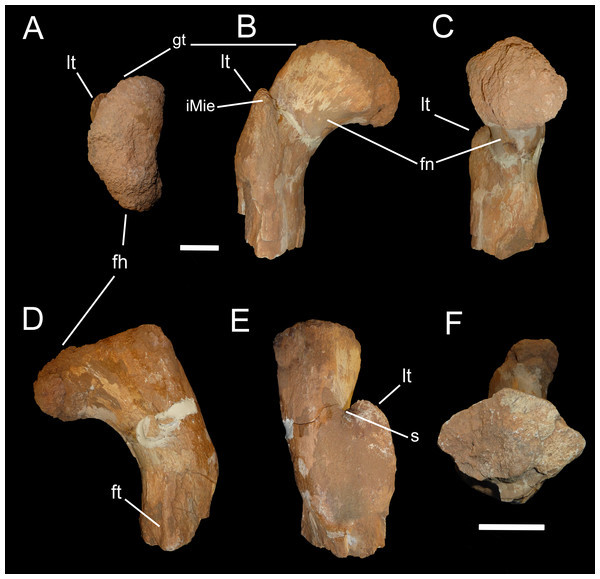Monster abelisaur: Fossil of giant killer dinosaur solves 100-year-old riddle

A monster abelisaur has been discovered that measures nine metres in length and weighs up to two tonnes, potentially making it one of the largest of its group ever found. The fearsome predator lived during the Cretaceous period in what is now Morocco at a site called the Kem Kem Beds – a sedimentary outcrop known for its unusual abundance of giant predatory dinosaur fossils.
The abelisaur's fossilised femur bone was discovered by Alessandro Chiarenza, a PhD student from Imperial College London, who came across it in a drawer at the Museum of Geology and Palaeontology in Palermo, Italy. He and colleague Andrea Cau analysed the fossil and realised it was from an abelisaur – but one that would have been far larger than most.
Abelisaurs
Abelisaurs roamed Morocco around 95 million years ago. They were carnivorous dinosaurs with tiny forelimbs, small but extremely sharp teeth, a short deep face and very powerful hind limbs. Scientists also believe they would have been covered in fluffy feathers.
The earliest known abelisaur was found in Australian and South American deposits dating back to around 170 million years. They appear to have disappeared from North America and Asia by the Cretaceous period, possibly as a result of competition with other predators. However, they persisted in southern continents until the mass extinction event 66 million years ago.
Their study of the fossil, published in the journal Peer J, is now helping to shed light on the maximum sizes of these dinosaurs. Chiarenza, co-author of the study, said: "Smaller abelisaur fossils have been previously found by palaeontologists, but this find shows how truly huge these flesh-eating predators had become. Their appearance may have looked a bit odd as they were probably covered in feathers with tiny, useless forelimbs, but make no mistake they were fearsome killers in their time."
The researchers said their finding confirms that abelisaurids reached their largest body size during the middle Cretaceous period, and that this group would have lived alongside other giant theropods in Africa.

Furthermore, the fossil has helped solve a 100-year-old problem among palaeontologists, known as Stromer's Riddle. The Kem Kem Beds would indicate that abelisaurs existed at the same time and location as five other groups of predatory dinosaurs and did so without forcing each other to extinction.
At the time the abelisaur lived, the region would have been covered in a lush savannah, mangrove swamps and river – ideal for hunting turtles, crocodiles, other dinosaurs and fish. Yet similar studies of abelisaurs from Tunisia indicate the group were inland hunters.
The researchers now believe the quickly changing geology of the region meant the all fossils got mixed together, destroying the chronological ordering and creating an illusion of co-existence.
Chiarenza said: "This fossil find, along with the accumulated wealth of previous studies, is helping to solve the question of whether abelisaurs may have co-existed with a range of other predators in the same region. Rather than sharing the same environment, which the jumbled up fossil records may be leading us to believe, we think these creatures probably lived far away from one another in different types of environments."
© Copyright IBTimes 2025. All rights reserved.






















